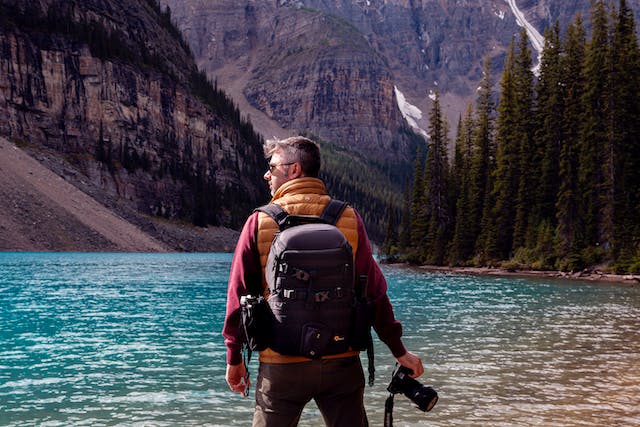This post may contain affiliate links which means I may receive a commission for purchases made through links. I will only recommend products that are valuable to my readers! Your participation has no effect on pricing.
Welcome to the enchanting world of wildlife photography, where every click of the camera is capturing the beauty of the wild, and transporting you to the heart of the animal kingdom.
We’ve documented some very valuable insight on how to become a wildlife photographer
In this blog, we’ll explore the art, techniques, and thrills of capturing nature’s most fascinating and elusive creatures through the lens. Whether you’re a beginner or a seasoned pro, there’s something for everyone in the captivating realm of wildlife photography. Join us in capturing the beauty of the wild and explore this journey into wildlife photography
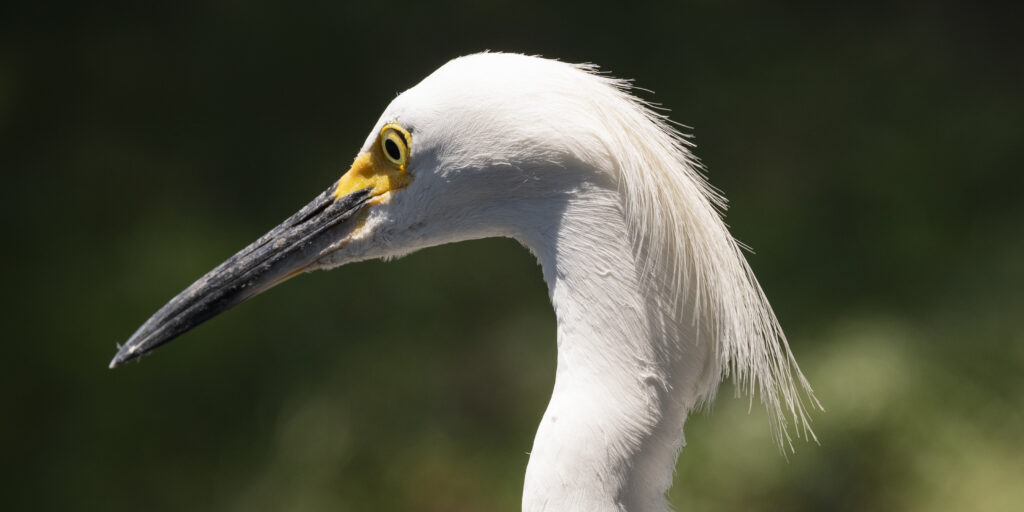
How to become a Wildlife Photographer: Getting Started
 Wildlife photography is an incredible and exciting niche for aspiring photographers. It allows one to connect with the incredible beauty of the natural world. It isn’t just a hobby; it becomes a deep and moving passion. Capturing the moments when animals are in their element, whether it’s a majestic eagle in flight or a playful group of otters by the river, is a way to share the wonder of our planet with others. Plus, it’s a thrilling adventure every time you venture into the wild to chase that perfect shot.
Wildlife photography is an incredible and exciting niche for aspiring photographers. It allows one to connect with the incredible beauty of the natural world. It isn’t just a hobby; it becomes a deep and moving passion. Capturing the moments when animals are in their element, whether it’s a majestic eagle in flight or a playful group of otters by the river, is a way to share the wonder of our planet with others. Plus, it’s a thrilling adventure every time you venture into the wild to chase that perfect shot.
Wildlife photography is also about preserving the magic of nature and sharing it with the world. Your photos will display the beauty that nature beholds, and can inspire a whole generation about the need for conservation and protection of nature’s glory.

Essential Gear
When it comes to capturing the wonders of the natural world through wildlife photography, having the right gear is absolutely essential. Let’s break it down into three key aspects: the camera, lenses, and additional equipment.
First and foremost, your camera is the heart of your gear. Yes, you can take some really nice photographs with your smart phone if you have a cell phone telephoto lens attachment, but a good DSLR or mirrorless camera with a high-resolution sensor is ideal for wildlife photography. Most wildlife photographers would agree that a full frame sensor with a resolution at least 24mega pixels is ideal. It allows you to capture intricate details and produce stunning, high-quality images. Make sure your camera has fast autofocus capabilities to keep up with fast-moving subjects.
Next, your choice of lenses is crucial. A telephoto lens with a long focal length is a must-have for wildlife photography. Lenses that have a focal range of 300mm or up to 600mm will allow you to get up close and personal with your subjects without disturbing them. Additionally, a quality macro lens can be handy for those intricate close-ups of insects and small creatures. Another must have is a sturdy tripod and a gimbal head to keep your camera steady, especially when using heavy telephoto lenses.
To increase your chances of capturing that perfect shot, we recommend bring binoculars to all your excursions. You will get a much broader view of your surroundings…much easier that trying to scan your surroundings through the camera viewfinder. Once you’ve spotted a subject to photograph, you can switch to your camera now that you’ve located what you want to shoot.
Also, consider investing in camouflaged clothing or gear to help you blend into the environment. A reliable backpack or camera bag is essential for carrying your gear comfortably on long treks, and don’t forget spare batteries and memory cards. Lastly, always pack some cleaning supplies and weather protection to keep your equipment in top shape, as you’ll often find yourself in dusty or wet conditions. By investing in the right gear, you’re equipping yourself to tell the captivating stories of the animal kingdom through your lens.
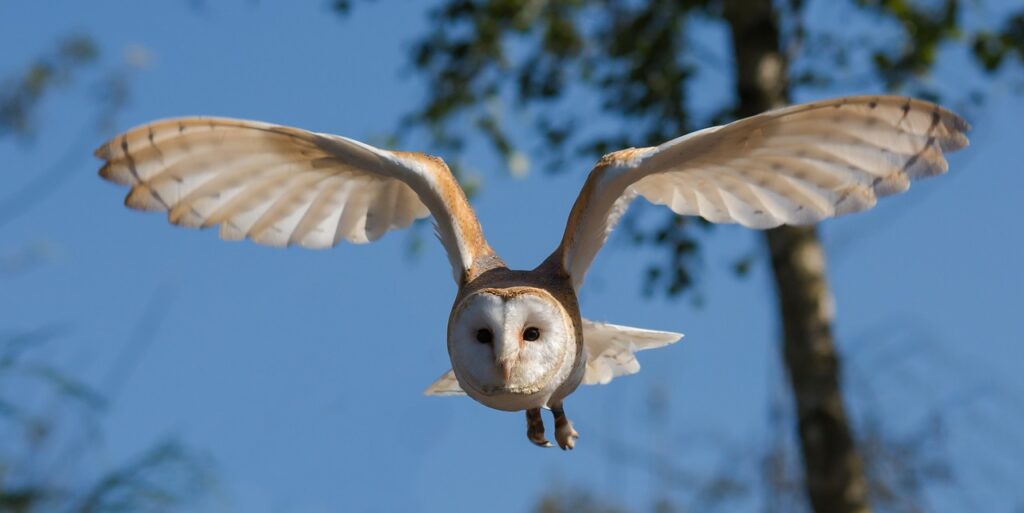
ISO - APERTURE - SHUTTER
 I hate sounding repetative. But for beginners, and aspiring photographers, this section is a “must learn”.
I hate sounding repetative. But for beginners, and aspiring photographers, this section is a “must learn”.
The exposure triangle plays a vital role in capturing stunning wildlife photographs. As we have explained in other blog articles, it consists of three crucial components: aperture, shutter speed, and ISO, and understanding how to manipulate these settings is a mainstay for wildlife photography.
First, let’s talk about aperture. Aperture controls the depth of field in your images. In wildlife photography, it’s important to isolate your subject from the background to create a more visually appealing image. By using a wide aperture (a smaller f-number like f/2.8), you can blur the background, making the animal you’re photographing stand out beautifully.
Secondly, shutter speed is key in capturing fast-moving wildlife. Different animals move at different speeds, so adjusting your shutter speed accordingly is crucial. A faster shutter speed freezes motion, preventing any blurriness in your shots. In contrast, a slower shutter speed can be used creatively for capturing movement or showing the graceful flow of an animal’s motion.
Lastly, the ISO setting controls your camera’s sensitivity to light. When photographing wildlife, you often encounter low-light situations, especially during dawn or dusk. In such conditions, a higher ISO setting allows you to maintain a fast shutter speed and avoid underexposure. However, be mindful of noise – too high an ISO can result in grainy photos.
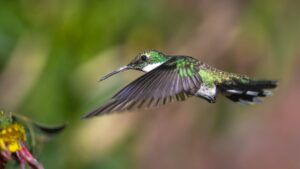 The exposure triangle is essential for wildlife photography. It helps you control the visual elements of your images, ensuring your subject stands out, captures motion, and maintains image quality in challenging lighting conditions. By understanding and effectively using aperture, shutter speed, and ISO, you’ll be well on your way to capturing breathtaking wildlife photographs that tell a story and connect viewers with the beauty of the natural world.
The exposure triangle is essential for wildlife photography. It helps you control the visual elements of your images, ensuring your subject stands out, captures motion, and maintains image quality in challenging lighting conditions. By understanding and effectively using aperture, shutter speed, and ISO, you’ll be well on your way to capturing breathtaking wildlife photographs that tell a story and connect viewers with the beauty of the natural world.
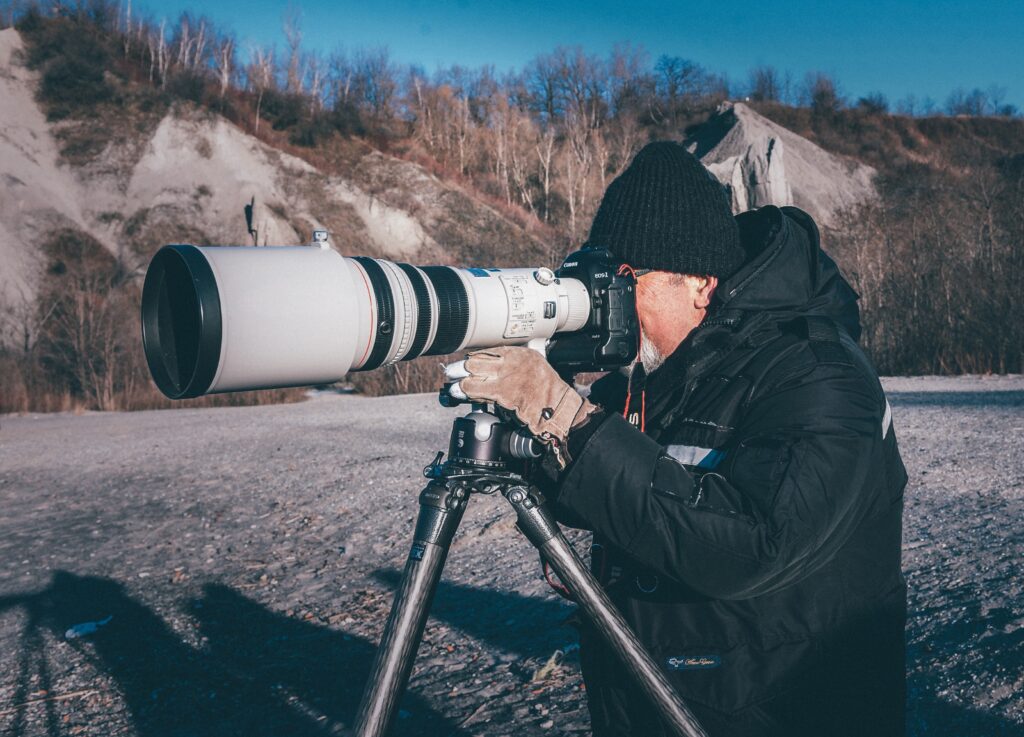
Mastering The Art: How to Become a Wildlife Photographer
Being proficient at wildlife photography is like becoming a storytelling wizard with your camera. It’s not just about technical skills but also a deep connection with nature. After you’ve equipped yourself with the right gear, it’s time to take a walk outdoors and witness nature up close and personal. Note: It’s not all about the equipment; it’s about patience. Wildlife doesn’t follow a script, so you have to wait for that perfect moment, often for hours or even days.
Understanding animal behavior is crucial. You need to know when they’re most active, where they hang out, and their habits. This knowledge helps you predict their actions and capture those candid shots. Being stealthy is another trick in the book. Animals are easily spooked, so you have to blend into the environment and move silently.
 Light is your best friend. Golden hours during sunrise and sunset offer magical, warm light. And remember, the eyes tell the story. Focusing on the subject’s eyes creates a connection in the photo. Post-processing can enhance your shots, but don’t go overboard; keep it natural.
Light is your best friend. Golden hours during sunrise and sunset offer magical, warm light. And remember, the eyes tell the story. Focusing on the subject’s eyes creates a connection in the photo. Post-processing can enhance your shots, but don’t go overboard; keep it natural.
Lastly, respect wildlife. Maintain a safe distance and never disturb them for a photo. Mastering wildlife photography takes time, but the journey is as rewarding as the destination.

Macro Marvels
Insects and Miniature Worlds. Wildlife macro photography is like getting up close and personal with the tiniest creatures in the natural world. It’s all about capturing the intricate and often overlooked details of insects, plants, and other small subjects. This kind of photography is like exploring a miniature universe, and it requires some specialized gear and techniques.
One of your best friends will be a good macro lens. These lenses allow you to focus on subjects very close to your camera, revealing details you might not even notice with the naked eye. Not to sound repetitive, but a tripod is almost a must now, as any small movement can throw off your focus and you will have a very shallow focal range. Take no chances at missing a great shot!
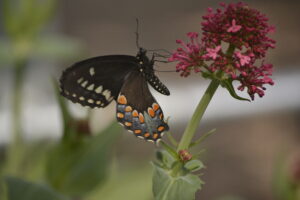 Patience is key because these subjects can be skittish, and waiting for the perfect moment is part of the game.
Patience is key because these subjects can be skittish, and waiting for the perfect moment is part of the game.
Lighting plays a crucial role. Many macro photographers prefer natural light, but you might also use a flash or diffusers to control and soften the light. It’s all about creating a well-lit, captivating image.
Composition is just as important as in any other type of photography. Pay attention to the background, as a cluttered or distracting backdrop can ruin your shot. Try to isolate your subject and make it the star of the frame.
Depth of field is another vital aspect. In macro photography, you often work with a very shallow depth of field, meaning that only a small portion of your subject is in focus. You can play with this to create interesting effects, but it requires precision.
So, when you’re into wildlife macro photography, you’re like a detective uncovering the hidden beauty in the miniature world of nature. It’s a captivating and rewarding journey, one snapshot at a time.
Good, detailed post-processing will bring your shots to a whole new level of magnificent. We are going to get into this subject in another blog soon. So please stay tuned!
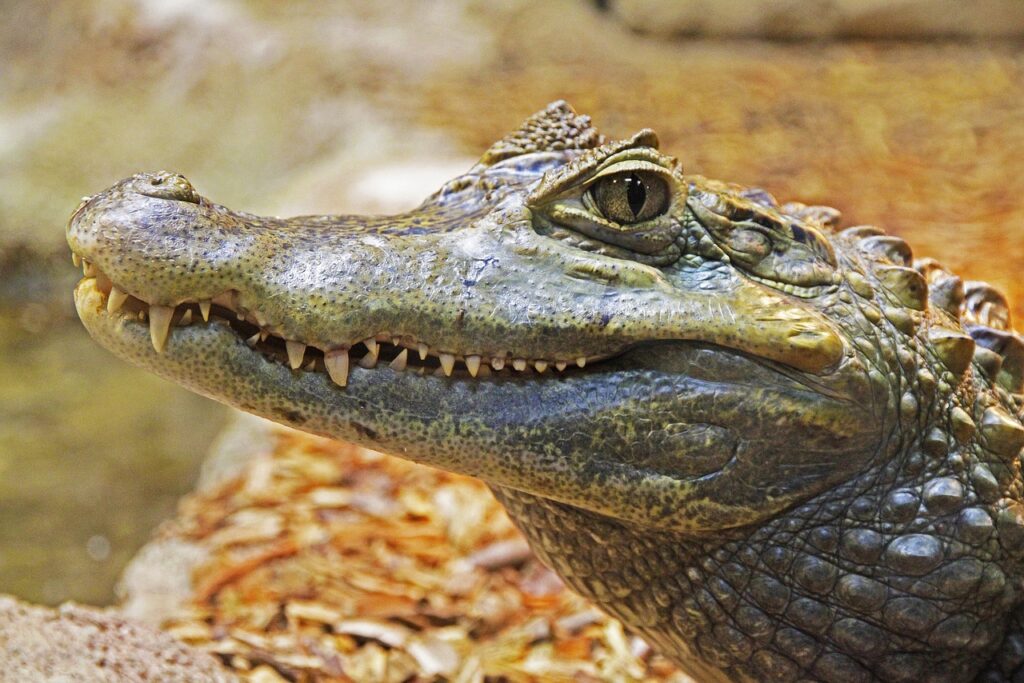
Stealth Mode - Getting Close to Shy & Dangerous Animals
In the world of wildlife photography, there’s a group of creatures that truly challenge the limits of a photographer’s skills and patience – shy and dangerous wildlife. These animals often dwell in remote and perilous environments, making it a daunting task to capture them through the lens. But it’s precisely this challenge that draws photographers into their world, a world of untamed beauty and raw power.
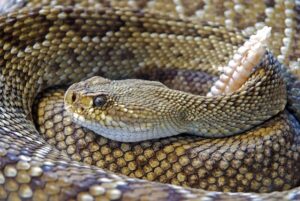 Things to know when delving into the lives of shy and elusive creatures. These animals prefer solitude and shun human contact. Wildlife photographers will often share their experiences in tracking these elusive beings, from navigating treacherous terrain to camping out for days on end, waiting for that one magical shot. Always keep in mind that patience is a virtue, and in wildlife photography, it’s the golden rule. Our blog will explore the art of waiting and watching, a skill mastered by photographers who understand that the most captivating moments happen when we least expect them. Through interviews, we can learn how photographers endure long stretches of inactivity just to seize a glimpse of a wild cat stalking its prey or a reclusive owl emerging from the shadows.
Things to know when delving into the lives of shy and elusive creatures. These animals prefer solitude and shun human contact. Wildlife photographers will often share their experiences in tracking these elusive beings, from navigating treacherous terrain to camping out for days on end, waiting for that one magical shot. Always keep in mind that patience is a virtue, and in wildlife photography, it’s the golden rule. Our blog will explore the art of waiting and watching, a skill mastered by photographers who understand that the most captivating moments happen when we least expect them. Through interviews, we can learn how photographers endure long stretches of inactivity just to seize a glimpse of a wild cat stalking its prey or a reclusive owl emerging from the shadows.
There can always be Dangers Lurking! Wildlife can be dangerous, and when photographing these creatures, the risks are heightened. We hear the stories of photographers who have faced charging rhinos, venomous snakes, and territorial predators. They will frequently share their harrowing encounters and the precautions they take to ensure their safety while pursuing that perfect shot.
- Always prioritize your safety and the safety and welfare of the animals. Keep a safe distance, plan an escape route, and never approach dangerous wildlife too closely. Use your Long lenses to maintain a safe and comfortable distance between you and your subject.
- Be quiet and stealthy. Make sure you don’t make any loud noises with your camera gear or backpack. Keep a close eye on where you step, and what you are stepping on. Now is not a time to be having a conversation about a very quiet whisper.
- Do your homework! We can’t stress this enough. If you are planning a photo safari for dangerous animals, you should do your research first. What are their habits? When are they most active, and why? Is it mating season? Animals tend to be very spooky and aggressive during mating season. All these things can be easily searched on line. It is also a very good idea to carry a pocket guide or small book on the characteristics of your subjects.
- Wear camouflage and use blinds to keep hidden and out of sight when photographing dangerous wildlife.
- Stay down wind whenever possible and don’t wear any clothing that has been washed in a scented detergent. Also, it should go without saying that having perfume or cologne on is definitely a bad idea. Wild animals have extremely sensitive smelling abilities, and Be careful and think about smells and noise, or they will know you are coming long before you know where they are.
- Lastly, remember you are above all a conservationist. Be aware of the importance of respecting the animals’ boundaries and their environments. Wildlife photographers talk about the code of conduct they adhere to and their role in conservation efforts, using their images to raise awareness and protect these incredible creatures. Let your photos alert everyone who sees them to the beauty and need to protect all nature’s creatures both large and small. Let the world witness the beauty that is nature.
- “Capturing the Elusive” is not just a blog about wildlife photography; it’s a glimpse into the passion, dedication, and unwavering commitment of those who document nature’s most elusive and dangerous creatures. Your photographs not only bring these animals to our screens but also carry a powerful message about the need to protect and preserve their habitats for generations to come. Let your passion for wildlife photography ignite a deeper appreciation for the world’s most incredible creatures.
This blog should provide a comprehensive guide to wildlife photography while keeping the language personable and engaging. If you need more specific information or have any questions, feel free to ask!
